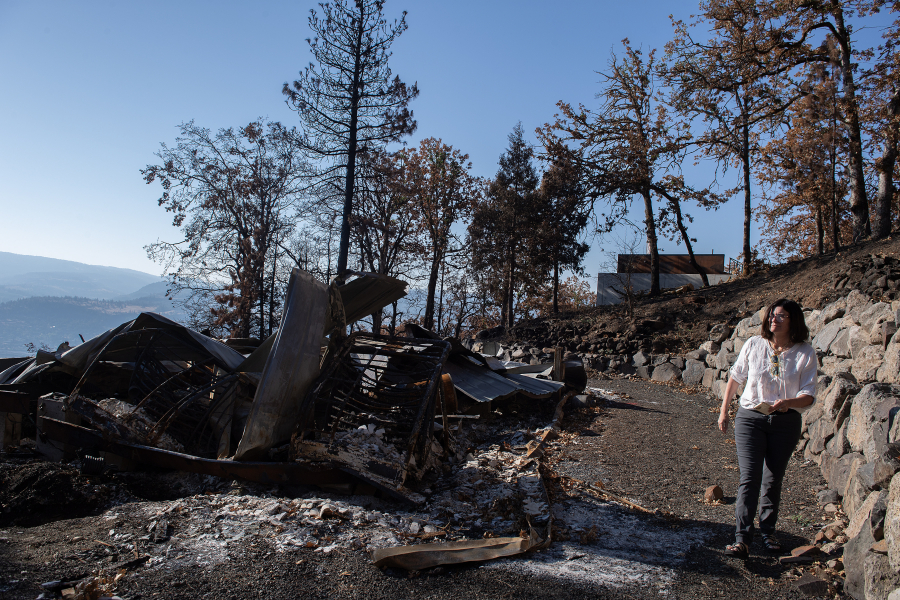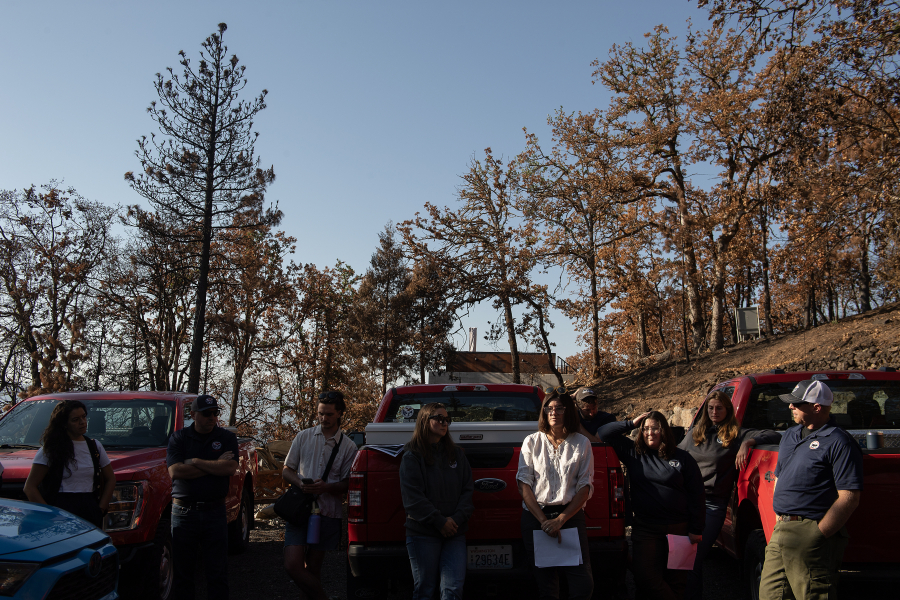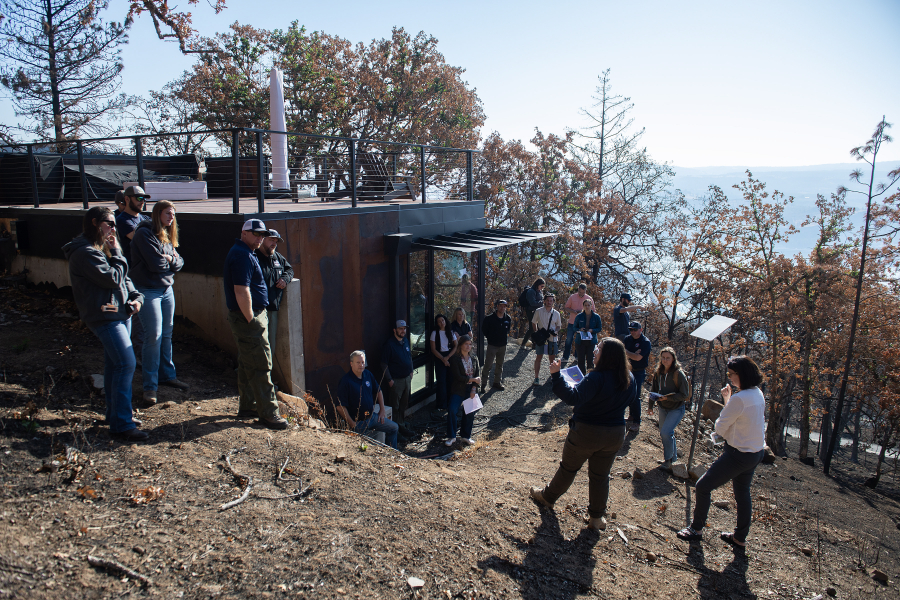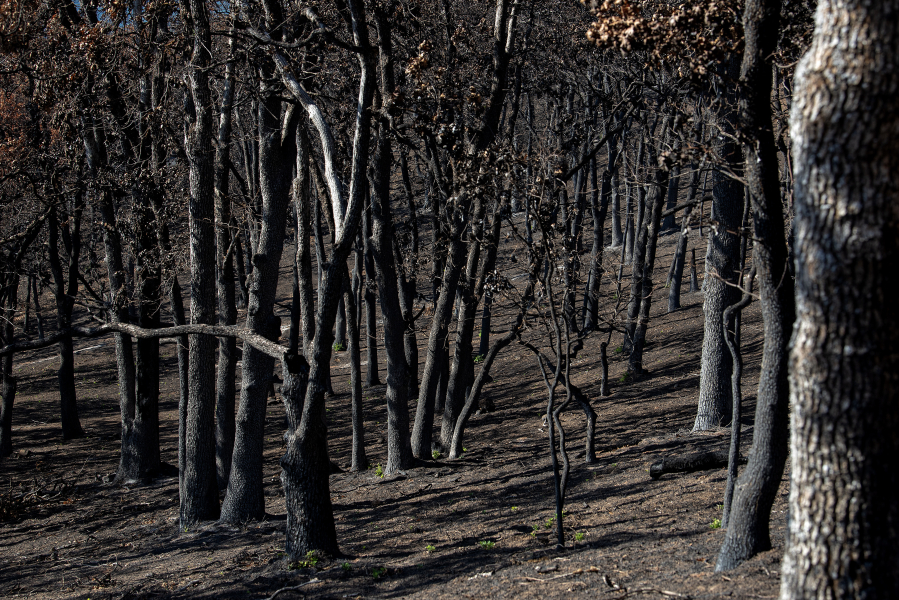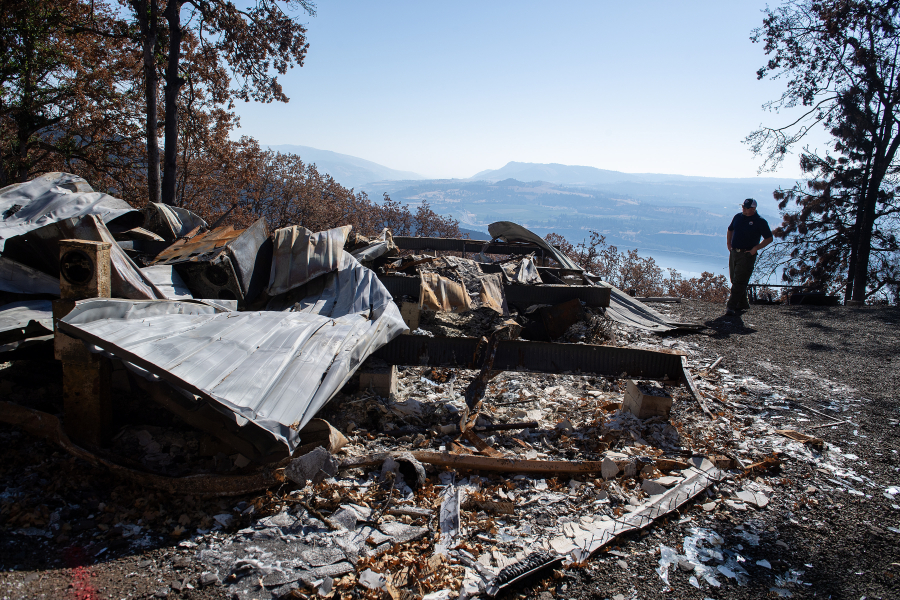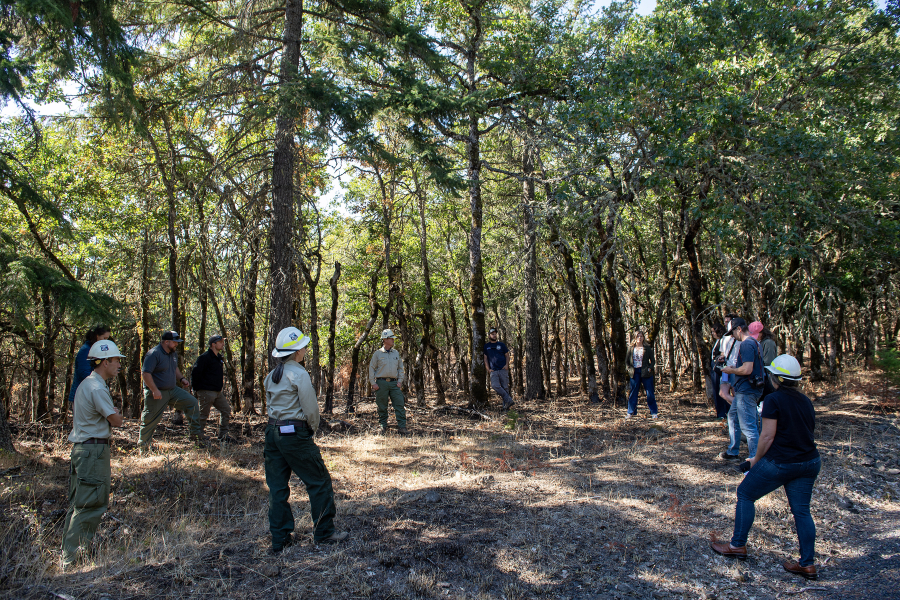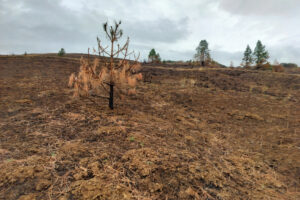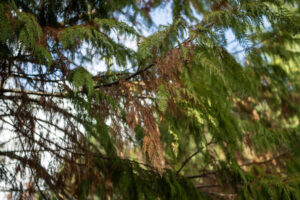Officials from the Washington Department of Natural Resources had the rare opportunity last week to see how well strategies to minimize wildfire damage held up to an actual fire.
Public Lands Commissioner Dave Upthegrove, DNR staff, local officials and others toured properties in a fire-damaged area near White Salmon.
The Burdoin Fire ignited near Lyle on the Washington side of the Columbia River Gorge around 2:30 p.m. July 18. By the time it was finally extinguished the following month, the fire had burned more than 11,000 acres, destroyed 45 structures — including homes, outbuildings and a winery — and forced thousands of residents to evacuate.
“(The residents) weren’t given a lot of time. I think it was like 8-10 minutes,” said Alison Martin, forest resilience coordinator for DNR.
Martin said it was clear the work residents had done with assistance from DNR to prepare homes and land paid off.


